Change is in the air for Final Fantasy.
Once considered the golden child of mainstream gaming thanks to the emergent success of Final Fantasy VII in 1997, the series that helped created a new sub-genre of RPG has created and rebuilt its fan base over again many times as each new release seeks to reinvent the series while retaining its general vibe of crystals, giant summonable monsters, and speculative stories crammed with melodramas. Every Final Fantasy is different, and every Final Fantasy is the same.
This continues with today's release of the latest mainline title in the franchise, Final Fantasy XVI. The first single-player numbered title in seven years, producer Naoki Yoshida's take on Final Fantasy shifts the gameplay toward a third-person action style reminiscent of Devil May Cry and Bayonetta, while retaining the series's trademark fantasy setting, sprawling story, and breathtaking set pieces.
But, all these changes have many fans asking what it means to be a "Final Fantasy?" How many knobs can you turn before it becomes something else entirely, despite the name on the box? Or, for that matter, does it even qualify as a "JRPG" anymore—a genre it helped create in the 80s—or is that term itself dated, meaningless, and sometimes hurtful?
For a few days in February 2023, social media was buzzing with the idea that Final Fantasy XVI creator Naoki Yoshida didn't want people thinking of his latest game as a "JRPG." In an interview with the YouTube channel SkillUp, Yoshida said, “There was a time when this term first appeared 15 years ago, and for us as developers the first time we heard it, it was like a discriminatory term.”
It opened the door for a complex discussion about the label's use and history—particularly its use as a derogatory term during the Xbox 360 and PlayStation 3 era—and had many people wondering how a game in a series could drop a genre label it helped create in the first place.
He's since clarified and expanded on the firestorm conversation, telling IGN that "we don't go into [development] thinking, 'we're going to make a JRPG', or 'We're going to make a Western RPG this time.' We're just going to make the RPG that we want to make. We're going to make that action RPG that we want to make."
Yoshida explained that he and his team don't mind the term "JRPG," and understand its multifaceted use in fandom. "But be careful," he said, "because there are some that do agree with the term. That’s what I wanted to get across. But then of course, that turns into something like 'Yoshida hates JRPGs!' That’s not the case!"
So, Yoshida's fine with the phrase, but his comments reveal a lot about not only the JRPG genre, but the vast changes Final Fantasy XVI brings to the series with its emphasis on action-based combat, node-based exploration streamlined quest design, and a desire to lure in new and younger fans. There's a form of cultural and creative exchange happening across gaming that's influencing not just Final Fantasy XVI, but a whole generation of mainstream AAA titles.
“There was a time when this term first appeared 15 years ago, and for us as developers the first time we heard it, it was like a discriminatory term.”
There's a perception among some western fans that a Final Fantasy game requires certain elements to qualify as a true Final Fantasy game—a sentiment that also exists among Japanese fans, according to Yoshida.
"You have a lot of fans that maybe don't want the series to change," Yoshida explained to IGN. Sticking too close to a formula, however, runs the risk of becoming stagnant, he continued. "If it's not going to change, then that doesn't give motivation for players that maybe look at the Final Fantasy series as, 'Okay, this is something maybe that's not for me. And it never changes, so why do I even want to try it?'" Once that starts happening, according to Yoshida, "your audience gets smaller and smaller, because you keep making it for the same people."
For many fans, their idea of the "Final Fantasy formula" is shaped by the first game they played. If you started with Final Fantasy VI, then Final Fantasy X's linear world exploration, sphere grid, and turn-based combat system might feel like a different series entirely. Those that started with Final Fantasy X were startled by the open world, real-time combat, and high fantasy setting of Final Fantasy XII.
"We have to challenge ourselves to try something new," said Yoshida. Final Fantasy XVI represents a turning point for the series—an opportunity to figure out what modern fans and longtime fans alike enjoy. Final Fantasy has always been rife with change. The series' most defining feature is that change is constant, expected.
So, let's take a trip down memory lane and look at just some of the times Final Fantasy has reinvented itself in mainline and spinoff titles over the course of its 30+ year history.
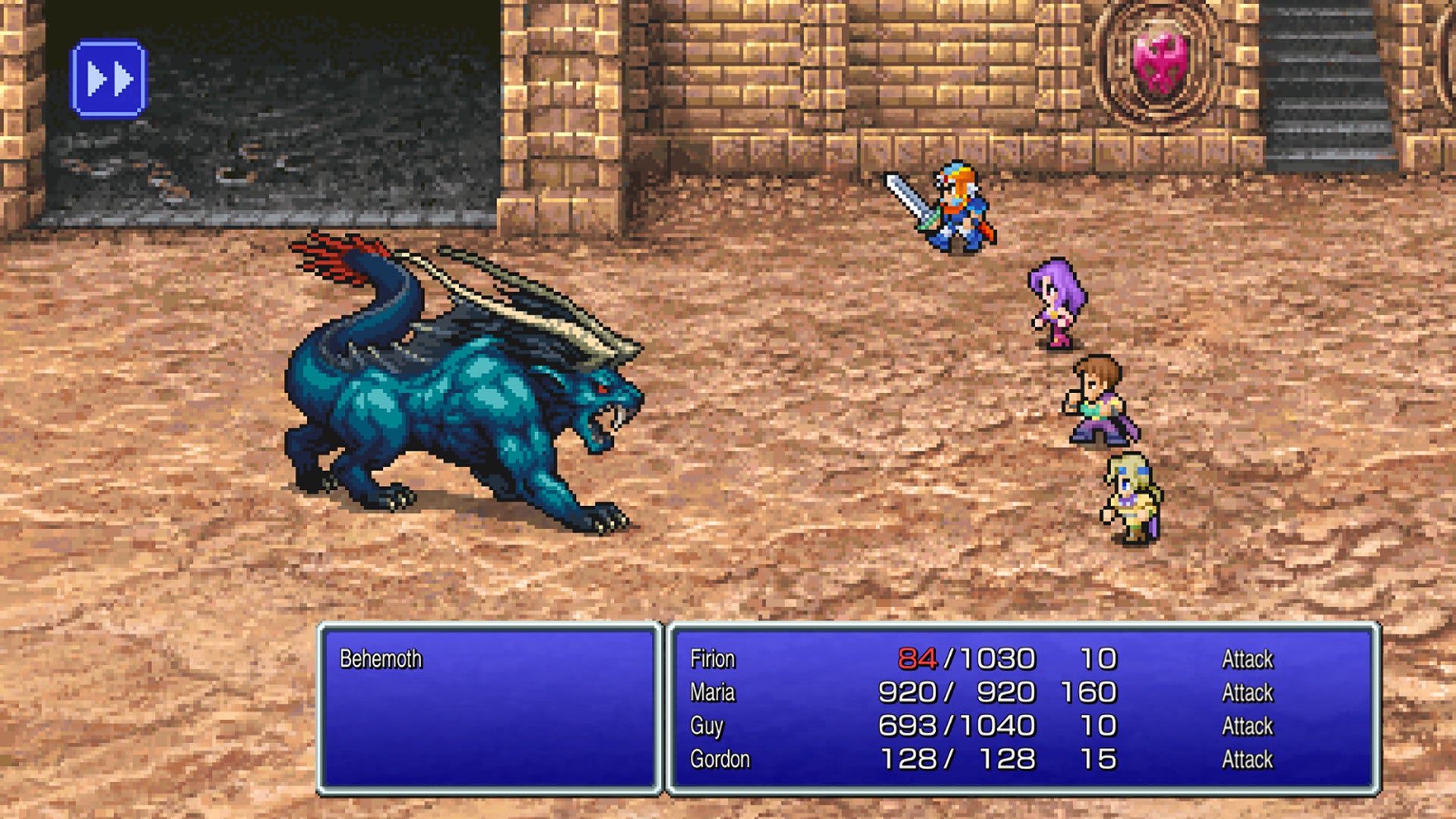
You can argue the truth behind the apocryphal story about whether Final Fantasy was creator Hironobu Sakaguchi's last ditch effort to save a struggling Squaresoft, but whatever the case there, its enormous and unexpected success changed Squaresoft's fortunes. So, of course, they did what any sane company would do: immediately began work on a sequel.
But, instead of cloning Final Fantasy, Sakaguchi's ambitions for the series appeared immediately as Final Fantasy II changed many elements from the first game in pursuit of a more hand-guided and cinematic experience. Gone was the generic player-picked party of four Light Warriors, replaced instead by named characters with actual personalities, goals, and conflicts, and purpose within the game's narrative.
Instead of returning to the Dungeons & Dragons-inspired class system that makes Final Fantasy so fun to replay, Final Fantasy II dreamed up a new character progression system based on the player's actions in combat. Want to improve your character's attack? Have them attack more in combat. Want stronger magic? Cast more spells. Need more HP? Make sure they're being hit by enemies (or, better yet, hit them with your own characters).
It was a horribly broken system, and not very much fun, but illustrates the series' desire for change was baked into its earliest titles.
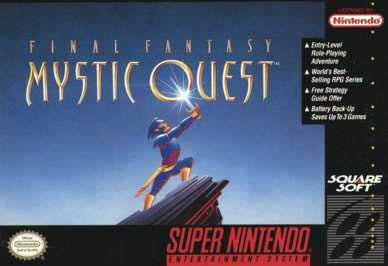
Chasing the Western market, Square tapped director Kouzi Ide to create an Americanized take on Final Fantasy that scrapped a lot of the series's non-linear complexities for an on-rails roleplaying-light adventure called Final Fantasy Mystic Quest. Notably, it ditched large parties in favor of a single protagonist and a rotating cast of one-off companions, swapped an explorable world map for node-based navigation, and swapped traditional equipment for a system where newly acquired weapons and armor replaced the older, weaker items.
It's no surprise this panoply of compromises failed to establish the series in North America, but it did provide some series highlights such as the puzzle-based dungeons that utilized weapon abilities (swords can hit switches, axes can chop down trees, claws can climb some walls, etc.) for traversal. This approach to puzzle design would be popularized by later games like 1995's Lufia II: Rise of the Sinistrals and 1996's Wild Arms, but featured very rarely in later Final Fantasy games.
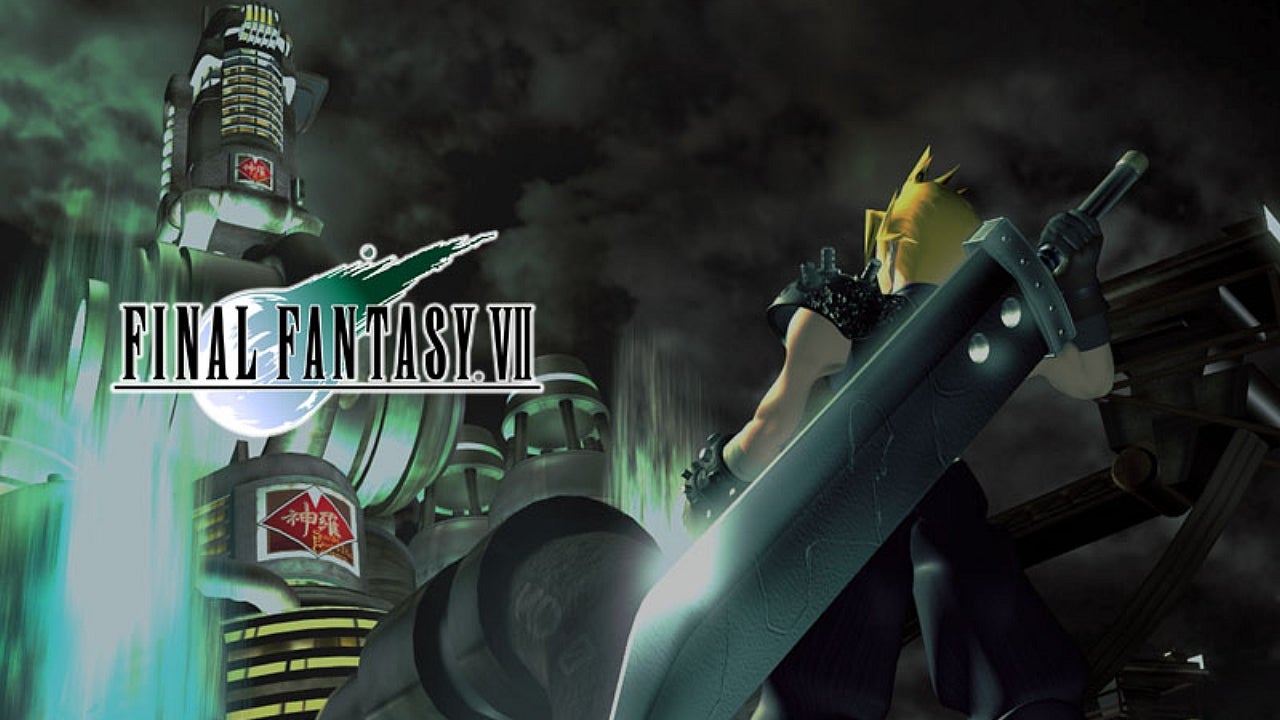
Final Fantasy VII brought massive change not only for the Final Fantasy series, but the JRPG genre as a whole by introducing pre-rendered backgrounds, 3D polygonal characters, and doubled down on cinematic visual storytelling. Many of these concepts and technologies had been utilized before by other games, but Final Fantasy VII merged high-end tech with the PlayStation's robust multimedia features, and created a highly-detailed world that was truly revolutionary. It highlighted the impressive possibilities of Sony's brash new game console, and brought Hironobu Sakaguchi one step closer toward his dream of merging video games with film's cinematic qualities. It changed what people expected of video game narratives, paving the way for a massive expansion of mainstream popularity for the JRPG genre that was only possible by implementing new techniques and technologies to reach a much larger waiting audience.
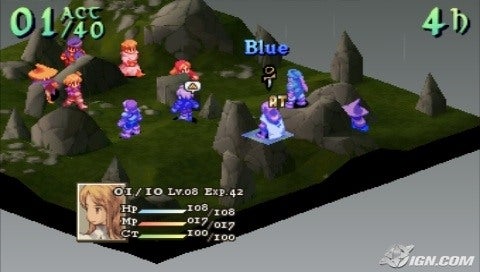
With Final Fantasy VII taking the series mainstream in most dramatic fashion, the obvious follow-up, just half a year later, was to release a slow-paced tactical RPG with a baroque storyline, a bajillion characters, and a progression system that required hours and hours of grinding to build the perfect team, right? Right?
Creator Yasumi Matsuno was no rookie when it came to this mix of political high fantasy storytelling and strategic gameplay—his previous games included Ogre Battle: March of the Black Queen (SNES, 1993) and Tactic Ogre: Let Us Cling Together (SNES, 1995), but it was unlike anything Final Fantasy had seen before.
Without VII's immense success, I'm not entirely convinced the West would've even seen Final Fantasy Tactics in 1998, but its impact and popularity endure, with many fans clamoring for a home console remaster 25 years after its first release. Matsuno's oeuvre of politics-meets-magic would rear its head again when he directed 2006's Final Fantasy XII, and lives on in Final Fantasy XVI's Game of Thrones-inspired story.

You think Final Fantasy adopting action-based combat after a decade of flirting with it is dramatic? Imagine the clamour and surprise when Square announced the next mainline Final Fantasy was going to be an online-only MMORPG with a monthly subscription cost. When it finally came out two years later, it even shipped with an HDD and broadband modem! It was such a departure not only for the Final Fantasy series, but console gaming in general, (Shoutout to 2000's Phantasy Star Online, which might not have had the "Massively" part down, but was one of the first concrete examples of popular online console gaming.)
It's important to recognize this was two years before World of Warcraft came out in 2004 and took the MMORPG genre into the mainstream stratosphere. Not only was Final Fantasy shifting to online-only gameplay, but it was doing so in an environment where the genre had popular games but not Popular games,
For EverQuest fan and series creator Hironobu Sakaguchi and producer Hiromichi Tanaka, MMORPGS provided the perfect opportunity to expand on the robust job and ability systems introduced in earlier games like Final Fantasy III and V. Impressively, Final Fantasy XI managed to feel like a full-fledged, challenging MMORPG, more than equal to its peers at the time, while still feeling like a genuine Final Fantasy game thanks to its bestiary of familiar baddies, series-staple spells and jobs, and a heavier focus on story compared to other MMORPGs on the market.
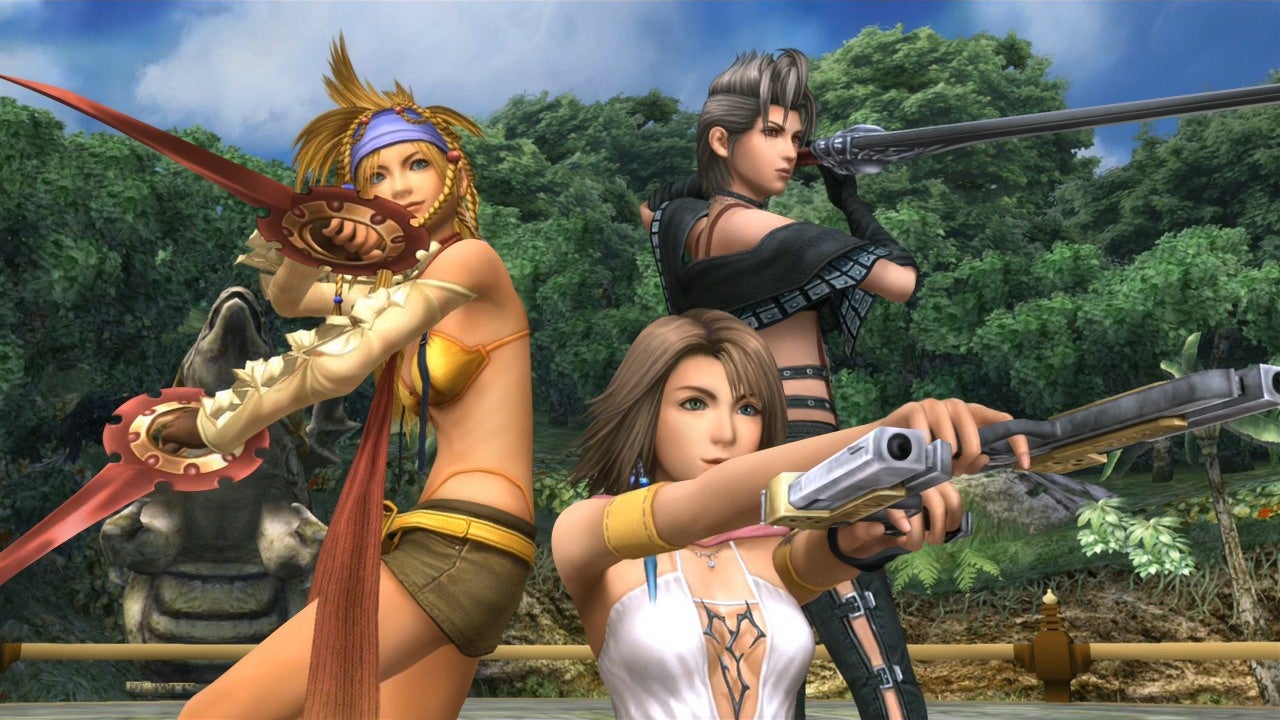
One of Final Fantasy's defining characteristics over its first decade-and-a-half was that each game stood on its own. New world, new characters, new mechanics. This a) gave every new entry license to change, and b) ensured every game was a great starting point for newcomers. No experience necessary… Until 2003.
After the smash success of Final Fantasy X on PlayStation 2, a game that introduced a huge number of new fans to the series (and with development of Final Fantasy XII struggling), Square Enix did the unthinkable: a direct sequel to a mainline Final Fantasy.
Final Fantasy X-2 switched up the gameplay by whittling the player's party down to just three characters, giving the player more freedom with its non-linear structure, and introduced the Garment Grid and Dresspheres—a popular and creative take on the series's traditional job system. Rather than doubling down on what made Final Fantasy X a huge success, this sequel took risks, got playful, and ended up being one of the most unique titles in the series to date.
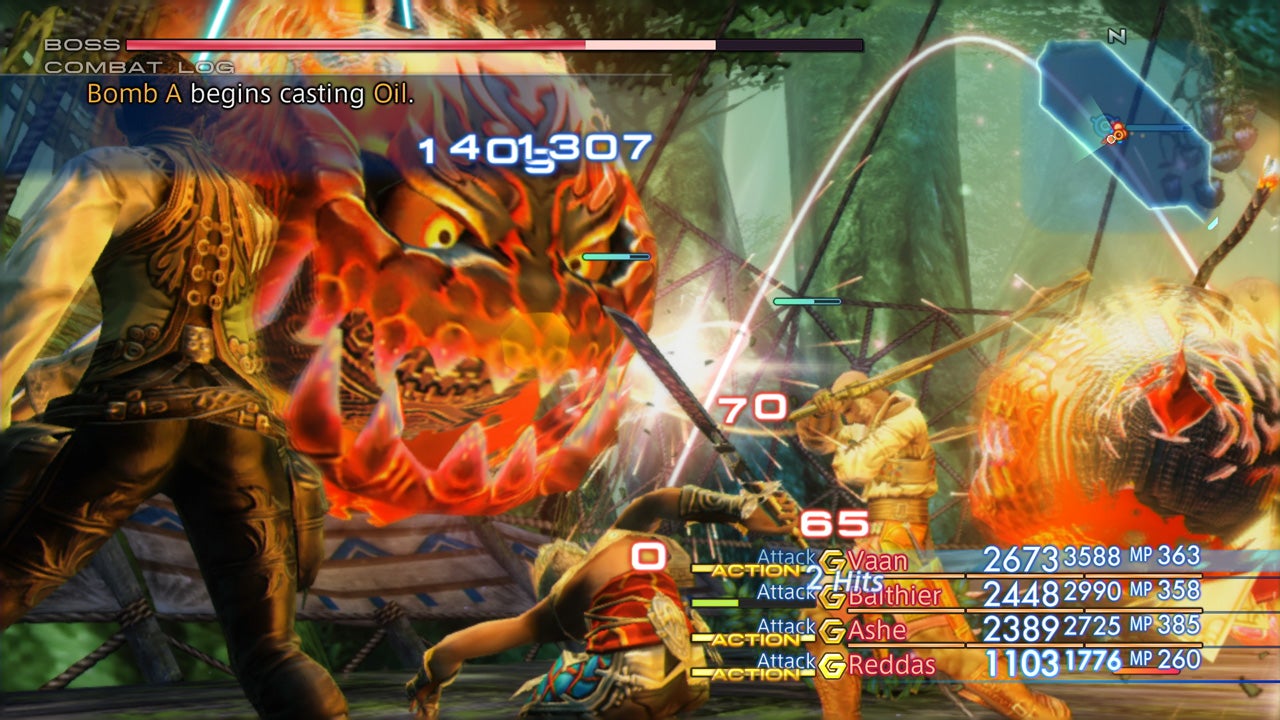
Final Fantasy's move into the realm of MMORPG with its eleventh entry was shocking, but even more surprising, perhaps, is Final Fantasy XII taking the basic combat mechanics from the online genre and adapting them to solo-play thanks to something called the Gambit system. For the first time in a mainline title (shoutout to Mystic Quest), players controlled a single character in combat, with the remaining two party members controlled by AI and Gambits set up by the player. These light programming rules instructed the AI-controlled characters to perform a specific action in response to a specific scenario. One Gambit might be "If a character drops below 50% health, cast Cure on them," and another could be "If an enemy is weak to lightning, cast Thunder."
And, because Final Fantasy XII was a solo game, the player could also pause the action to issue specific commands to party members if gambits weren't cutting it—a throwback to popular late 90s CRPGs like Baldur's Gate and Neverwinter Nights. It was a heady blend of automated MMORPG combat with the familiar turn-based mechanics from the series's past games.
For many players, this "programming 101" approach to party management was a perfect adaptation of the series's tried-and-true Active Time Battle combat system with the game's seamless exploration and huge, intricately designed regions. For others, it was a clearsign that the series was drifting from its roots as a turn-based franchise. But, that's the point.
"Japanese RPGs had all been pretty much command-based, it was something very new for that era," said Hiroaki Kato, lead production coordinator on Final Fantasy XII and its 2017 HD remaster in an interview with Polygon. "At the time, the Gambits were something new and fun. We're always looking for the next thing that's going to be new and fun."
Love them or hate them, Gambits signalledthat Final Fantasy was willing to experiment and evolve by bringing on new ideas from parallel genres. Though the gambit system never returned, some of its core ideas can be found in later games like Final Fantasy XV and Final Fantasy VII Remake, which both feature combat where players directly control a single character.
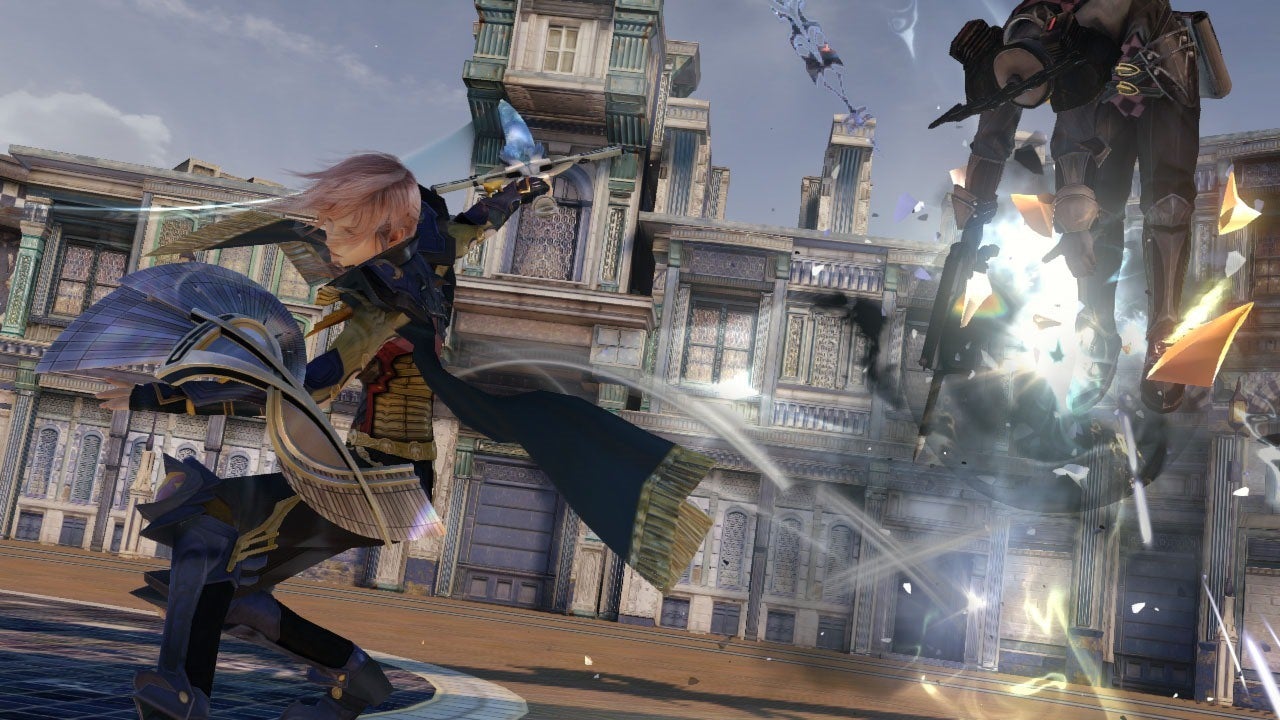
2006's Dirge of Cerberus gave Final Fantasy an early taste of character action with its over-the-shoulder shooter gameplay, but Lightning Returns shoved the series fully in the action-heavy focus embraced by Final Fantasy XVI, not dissimilar to what we’re seeing in Final Fantasy XVI.
Lightning Returns also showed the series flirting with western game design—with many elements feeling directly inspired by popular western series like Elder Scrolls and Assassin's Creed. This sort of cultural exchange has become central to the Final Fantasy identity as the series has cornered the MMORPG market with its Everquest-inspired Final Fantasy XIV, moved toward open world exploration in Final Fantasy XV, and openly cited George R.R. Martin's Game of Thrones as a narrative influence in Final Fantasy XVI.
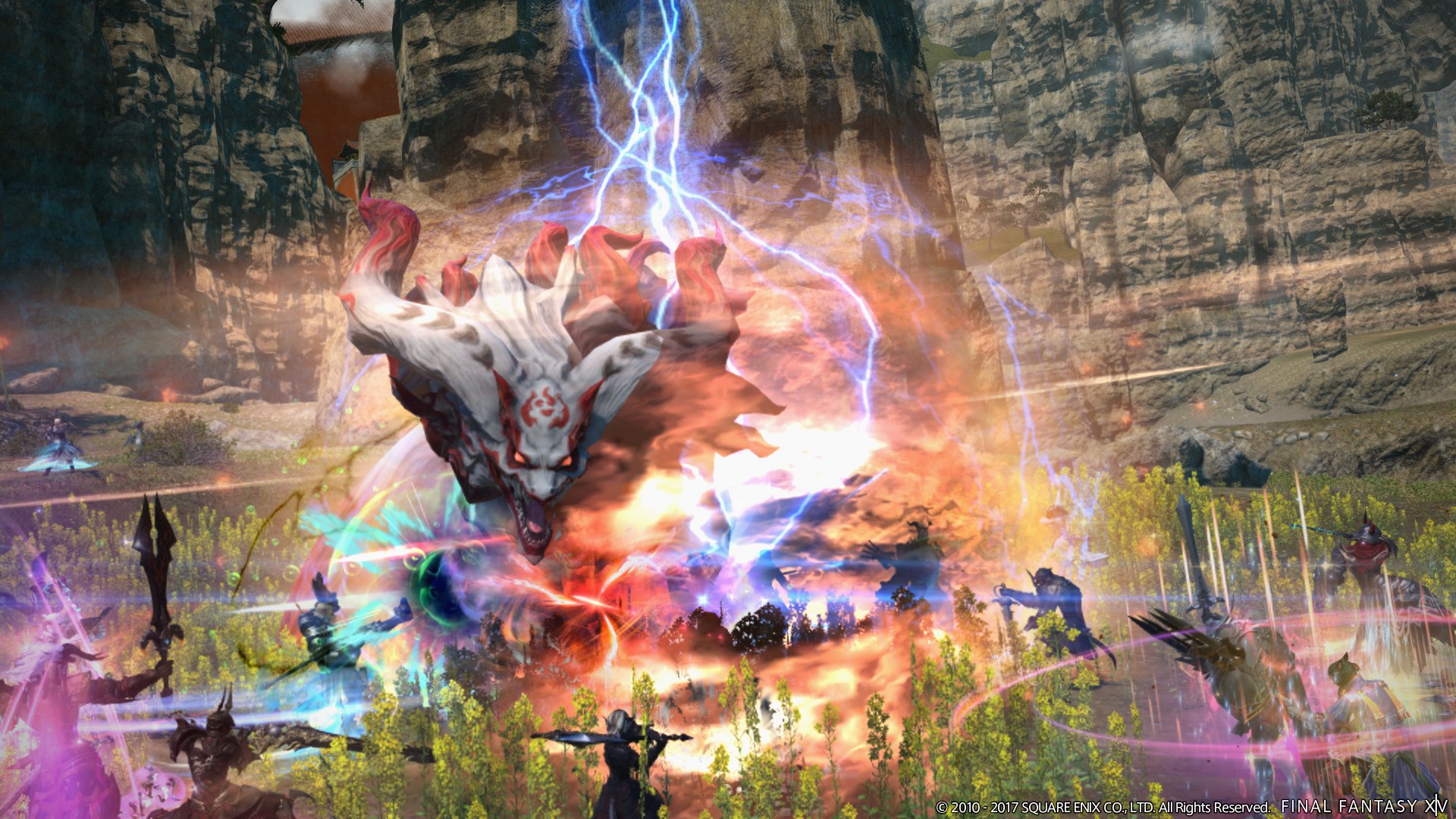
Final Fantasy VI's apocalyptic second act is one of the most famous and satisfying twists in gaming history, but in 2013, Final Fantasy XIV, the series's second MMORPG, took the end of the world to a whole new level. After a disastrous and embarrassing launch in 2010, Square Enix looked to have another Sprits Within-sized splat of egg on their face. Broken, ugly, and empty, Final Fantasy XIV failed to capitalize on the success of Final Fantasy XI and the cresting popularity of the MMORPG genre as a whole. "An arduous experience," declared IGN's Charles Onyett. "Tedious and tiresome."
Final Fantasy had redefined itself many times in the past, but never had it re-engineered a singular mainline title post-release. This was not a spin-off that could be handwaved away as a failed experiment. This was a foundational pillar for the series's future. Something had to be done.
Enter Naoki Yoshida. Known affectionately by fans as Yoshi-P, Yoshida took Final Fantasy XIV's producer reins from Hiromichi Tanaka with a singular mission: Destroy the world (literally) and build something beautiful from its ashes. And that's exactly what he did. On November 11th, 2012, Final Fantasy XIV's community gathered to witness a cataclysmic end to the Eorzea they knew. Final Fantasy XIV: A Realm Reborn—now one of the most popular and successful MMORPGs of all time—rose from its ashes. "Considering the stunning reversal of fortune that Square has achieved here," wrote IGN's Leif Johnson, "it seems like anything is possible."
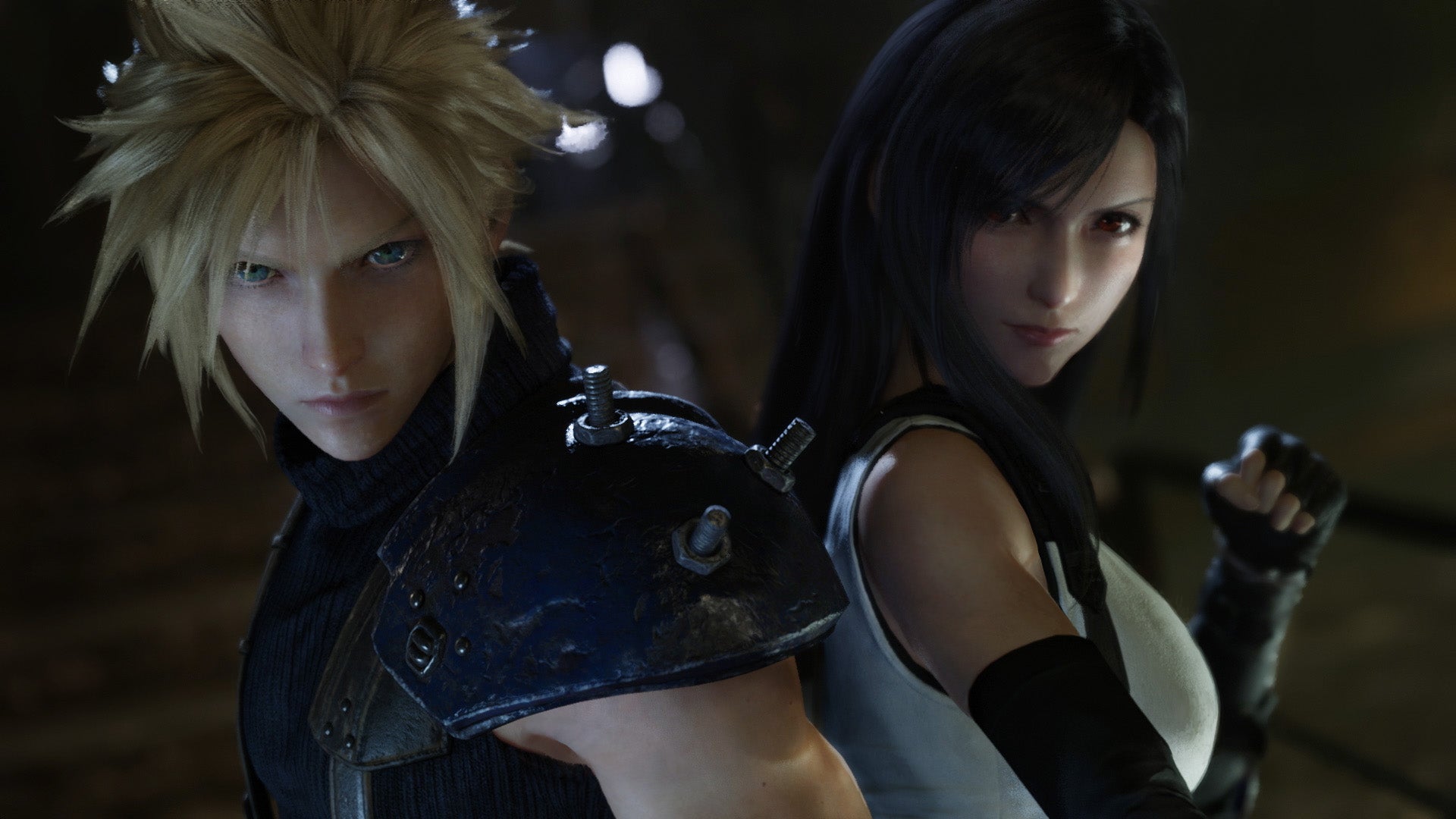
Re-releases of older Final Fantasy titles are rampant—I can't even tell you how many copies of the original I own across various platforms—but most of them sought to retain the original experience as much as possible. Final Fantasy VII Remake, on the other hand, seeks to redefine the concept of a remake itself.
As one of the most requested remakes of all time—fuelling a decade long clamor among fans—Final Fantasy VII Remake had to impress. Modernizing a classic requires an understanding of what made the old game so beloved, as well as the savvy to adapt those experiences for a new audience. As technology has progressed, so have the possibilities, but that comes at a literal cost: replicating the game worlds from older titles is prohibitively expensive with today's production pipelines and asset creation workflows. With a novel approach that makes Final Fantasy VII Remake both a traditional "remake" and a sequel all at once, the idea of remaking the past is baked into the narrative itself.
"In Japanese, we refer to it as a 'nostalgia filter,' wherein the memories retained of our favorite games from the past are even more beautiful/enhanced than our actual experience," Final Fantasy VII Remake producer Yoshinori Kitase told Inverse. "Game designers must take care when creating a remake to honor these enhanced memories that fans have built upon over the years."
Unable to reproduce Final Fantasy VII's entire 50+ hour experience in a single title, Remake instead ponders the very concept of remake. It weaponizes nostalgia by toying with the player's memories and emotional ties to the original, makes you question the hand of the creator in the game you're playing. A sequel and a remake at once, Final Fantasy VII Remake took a beloved golden idol, melted it down, and is attempting to recast it into something different… and potentially better.
Like Theseus's ship, Japanese RPGs have changed parts many times over the years. New systems installed, old parts improved. Many of the genre's hallmarks were born from technical limitations at the time, but as home gaming consoles have grown stronger, those limitations have vanished, leaving creators constrained only by their vision and inspiration. So, at what point does Final Fantasy—a series that help define the popular western notion of a "Japanese" RPG—stop being a Japanese RPG and become something else? Or does it, simply by being a Final Fantasy title, redefine the term itself?
Final Fantasy XVI Director Hiroshi Takai didn't approach Final Fantasy XVI's development thinking, "Okay, this is what we're going to change in the series, this is what we're going to keep the same," he explained. Takai's team looked at popular modern titles to see how fans tastes were changing. "We saw that a lot of people are playing action games right now," he said. "So to get the game into the hands of more people, we decided to make the game full real-time action." But, at odds with that focus on action-based gameplay, they also knew Final Fantasy fans expected a rich, fantasy-based story, and that a lot of long-time series fans might not be very good at action games. So, they started to build something that would, hopefully, provide a satisfying experience whether players were coming for the gameplay, the story, or both.
So, then, what makes a Final Fantasy a Final Fantasy? What makes it a JRPG?
The idea that genre labels have to be binary robs the creative agency of the people who create the games, and the people who are in turn inspired to create something new. As Final Fantasy has proven time and again over the decades since its creation—and as I explore in my 2022 book, Fight, Magic, Items: The History of Final Fantasy, Dragon Quest, and the Rise of Japanese RPGs in the West—genre labels are useful as shorthands to invoke a feeling, but they become less useful, and often harmful, when used to pigeonhole or dismiss work as "this" or "that."
"JRPG" is a vibe. It's a feeling. It's a matrix of inspirations and goals. It's a broad, expanding, and diverse set of themes, inspirations, narrative/gameplay structures that can be used to understand games, but shouldn't be used as an arbitrary label to put them in a clearly defined box.
And now that term may be on the way out entirely. When Yoshida says he doesn't want people calling Final Fantasy XVI a Japanese RPG, he's not deriding the genre's history. He's calling out the western roots, perception, and usage of the word, and encouraging players to think in non-binary terms. Final Fantasy XVI is a character action game, but it's also an RPG, and a cinematic narrative experience, it's got fighting game DNA in there, and, yes, bit inspired by the very first "JRPGs," too. A game can be many things.
For Yoshida, the defining element of a Final Fantasy is "Wow."
"JRPG" is a vibe. It's a feeling. It's a matrix of inspirations and goals.
"I remember when I first played Final Fantasy I," he said. You play for the first fifteen minutes, and there's no title screen, you're jut right in the action. "And then you cross that first bridge, and then you get the title screen. That was a 'wow" moment. It felt like you were watching a movie." Final Fantasy VII's wow factor was its graphics, he continued, along with shipping on three discs, which spoke to the game's size and scope. Each game in the series had something that wowed even long time fans.
Does Final Fantasy XVI play and feel differently than the series's roots and most popular games? Sure. But does it also have that "wow" factor? Absolutely.
That should encourage us to be open with our definition of what a "Japanese RPG" can be three decades after their populartization. Other genres are allowed to flourish and evolve—narrative-driven series like Half-life and Call of Duty could not exist if they had to be carbon copies of Wolfenstein 3D. RPGs shouldn't be shackled into conformity by the technical limitations they faced on 8- and 16-bit consoles. Just as Final Fantasy-creator Hironobu Sakaguchi initially envisioned from the first game, it's a series and genre that's informed by its past, but also influenced by its peers and shaped by the changing of technology and audience desires.
In Final Fantasy, change is constant. We've seen that through its history of mainline and spinoff titles. Final Fantasy XVI is just the next step.
Aidan Moher is the Hugo Award-winning editor of Astrolabe and author of Fight, Magic, Items: The History of Final Fantasy, Dragon Quest, and the rise of Japanese RPGs in the West. His work has appeared in WIRED, Washington Post, New York Magazine, and IGN. He can, unfortunately, still be found on Twitter.
Continue reading...
Once considered the golden child of mainstream gaming thanks to the emergent success of Final Fantasy VII in 1997, the series that helped created a new sub-genre of RPG has created and rebuilt its fan base over again many times as each new release seeks to reinvent the series while retaining its general vibe of crystals, giant summonable monsters, and speculative stories crammed with melodramas. Every Final Fantasy is different, and every Final Fantasy is the same.
This continues with today's release of the latest mainline title in the franchise, Final Fantasy XVI. The first single-player numbered title in seven years, producer Naoki Yoshida's take on Final Fantasy shifts the gameplay toward a third-person action style reminiscent of Devil May Cry and Bayonetta, while retaining the series's trademark fantasy setting, sprawling story, and breathtaking set pieces.
But, all these changes have many fans asking what it means to be a "Final Fantasy?" How many knobs can you turn before it becomes something else entirely, despite the name on the box? Or, for that matter, does it even qualify as a "JRPG" anymore—a genre it helped create in the 80s—or is that term itself dated, meaningless, and sometimes hurtful?
What is a JRPG?
For a few days in February 2023, social media was buzzing with the idea that Final Fantasy XVI creator Naoki Yoshida didn't want people thinking of his latest game as a "JRPG." In an interview with the YouTube channel SkillUp, Yoshida said, “There was a time when this term first appeared 15 years ago, and for us as developers the first time we heard it, it was like a discriminatory term.”
It opened the door for a complex discussion about the label's use and history—particularly its use as a derogatory term during the Xbox 360 and PlayStation 3 era—and had many people wondering how a game in a series could drop a genre label it helped create in the first place.
He's since clarified and expanded on the firestorm conversation, telling IGN that "we don't go into [development] thinking, 'we're going to make a JRPG', or 'We're going to make a Western RPG this time.' We're just going to make the RPG that we want to make. We're going to make that action RPG that we want to make."
Yoshida explained that he and his team don't mind the term "JRPG," and understand its multifaceted use in fandom. "But be careful," he said, "because there are some that do agree with the term. That’s what I wanted to get across. But then of course, that turns into something like 'Yoshida hates JRPGs!' That’s not the case!"
So, Yoshida's fine with the phrase, but his comments reveal a lot about not only the JRPG genre, but the vast changes Final Fantasy XVI brings to the series with its emphasis on action-based combat, node-based exploration streamlined quest design, and a desire to lure in new and younger fans. There's a form of cultural and creative exchange happening across gaming that's influencing not just Final Fantasy XVI, but a whole generation of mainstream AAA titles.
“There was a time when this term first appeared 15 years ago, and for us as developers the first time we heard it, it was like a discriminatory term.”
There's a perception among some western fans that a Final Fantasy game requires certain elements to qualify as a true Final Fantasy game—a sentiment that also exists among Japanese fans, according to Yoshida.
"You have a lot of fans that maybe don't want the series to change," Yoshida explained to IGN. Sticking too close to a formula, however, runs the risk of becoming stagnant, he continued. "If it's not going to change, then that doesn't give motivation for players that maybe look at the Final Fantasy series as, 'Okay, this is something maybe that's not for me. And it never changes, so why do I even want to try it?'" Once that starts happening, according to Yoshida, "your audience gets smaller and smaller, because you keep making it for the same people."
For many fans, their idea of the "Final Fantasy formula" is shaped by the first game they played. If you started with Final Fantasy VI, then Final Fantasy X's linear world exploration, sphere grid, and turn-based combat system might feel like a different series entirely. Those that started with Final Fantasy X were startled by the open world, real-time combat, and high fantasy setting of Final Fantasy XII.
"We have to challenge ourselves to try something new," said Yoshida. Final Fantasy XVI represents a turning point for the series—an opportunity to figure out what modern fans and longtime fans alike enjoy. Final Fantasy has always been rife with change. The series' most defining feature is that change is constant, expected.
So, let's take a trip down memory lane and look at just some of the times Final Fantasy has reinvented itself in mainline and spinoff titles over the course of its 30+ year history.
1988
Change Is The Name Of The Game: Final Fantasy II

You can argue the truth behind the apocryphal story about whether Final Fantasy was creator Hironobu Sakaguchi's last ditch effort to save a struggling Squaresoft, but whatever the case there, its enormous and unexpected success changed Squaresoft's fortunes. So, of course, they did what any sane company would do: immediately began work on a sequel.
But, instead of cloning Final Fantasy, Sakaguchi's ambitions for the series appeared immediately as Final Fantasy II changed many elements from the first game in pursuit of a more hand-guided and cinematic experience. Gone was the generic player-picked party of four Light Warriors, replaced instead by named characters with actual personalities, goals, and conflicts, and purpose within the game's narrative.
Instead of returning to the Dungeons & Dragons-inspired class system that makes Final Fantasy so fun to replay, Final Fantasy II dreamed up a new character progression system based on the player's actions in combat. Want to improve your character's attack? Have them attack more in combat. Want stronger magic? Cast more spells. Need more HP? Make sure they're being hit by enemies (or, better yet, hit them with your own characters).
It was a horribly broken system, and not very much fun, but illustrates the series' desire for change was baked into its earliest titles.
1992
Final Fantasy Goes West: Final Fantasy Mystic Quest

Chasing the Western market, Square tapped director Kouzi Ide to create an Americanized take on Final Fantasy that scrapped a lot of the series's non-linear complexities for an on-rails roleplaying-light adventure called Final Fantasy Mystic Quest. Notably, it ditched large parties in favor of a single protagonist and a rotating cast of one-off companions, swapped an explorable world map for node-based navigation, and swapped traditional equipment for a system where newly acquired weapons and armor replaced the older, weaker items.
It's no surprise this panoply of compromises failed to establish the series in North America, but it did provide some series highlights such as the puzzle-based dungeons that utilized weapon abilities (swords can hit switches, axes can chop down trees, claws can climb some walls, etc.) for traversal. This approach to puzzle design would be popularized by later games like 1995's Lufia II: Rise of the Sinistrals and 1996's Wild Arms, but featured very rarely in later Final Fantasy games.
1997
Polygons, CG cutscenes, and bears, oh my!: Final Fantasy VII

Final Fantasy VII brought massive change not only for the Final Fantasy series, but the JRPG genre as a whole by introducing pre-rendered backgrounds, 3D polygonal characters, and doubled down on cinematic visual storytelling. Many of these concepts and technologies had been utilized before by other games, but Final Fantasy VII merged high-end tech with the PlayStation's robust multimedia features, and created a highly-detailed world that was truly revolutionary. It highlighted the impressive possibilities of Sony's brash new game console, and brought Hironobu Sakaguchi one step closer toward his dream of merging video games with film's cinematic qualities. It changed what people expected of video game narratives, paving the way for a massive expansion of mainstream popularity for the JRPG genre that was only possible by implementing new techniques and technologies to reach a much larger waiting audience.
Final Fantasy Meets Chess: Final Fantasy Tactics

With Final Fantasy VII taking the series mainstream in most dramatic fashion, the obvious follow-up, just half a year later, was to release a slow-paced tactical RPG with a baroque storyline, a bajillion characters, and a progression system that required hours and hours of grinding to build the perfect team, right? Right?
Creator Yasumi Matsuno was no rookie when it came to this mix of political high fantasy storytelling and strategic gameplay—his previous games included Ogre Battle: March of the Black Queen (SNES, 1993) and Tactic Ogre: Let Us Cling Together (SNES, 1995), but it was unlike anything Final Fantasy had seen before.
Without VII's immense success, I'm not entirely convinced the West would've even seen Final Fantasy Tactics in 1998, but its impact and popularity endure, with many fans clamoring for a home console remaster 25 years after its first release. Matsuno's oeuvre of politics-meets-magic would rear its head again when he directed 2006's Final Fantasy XII, and lives on in Final Fantasy XVI's Game of Thrones-inspired story.
2002
Final Fantasy Goes Online: Final Fantasy XI

You think Final Fantasy adopting action-based combat after a decade of flirting with it is dramatic? Imagine the clamour and surprise when Square announced the next mainline Final Fantasy was going to be an online-only MMORPG with a monthly subscription cost. When it finally came out two years later, it even shipped with an HDD and broadband modem! It was such a departure not only for the Final Fantasy series, but console gaming in general, (Shoutout to 2000's Phantasy Star Online, which might not have had the "Massively" part down, but was one of the first concrete examples of popular online console gaming.)
It's important to recognize this was two years before World of Warcraft came out in 2004 and took the MMORPG genre into the mainstream stratosphere. Not only was Final Fantasy shifting to online-only gameplay, but it was doing so in an environment where the genre had popular games but not Popular games,
For EverQuest fan and series creator Hironobu Sakaguchi and producer Hiromichi Tanaka, MMORPGS provided the perfect opportunity to expand on the robust job and ability systems introduced in earlier games like Final Fantasy III and V. Impressively, Final Fantasy XI managed to feel like a full-fledged, challenging MMORPG, more than equal to its peers at the time, while still feeling like a genuine Final Fantasy game thanks to its bestiary of familiar baddies, series-staple spells and jobs, and a heavier focus on story compared to other MMORPGs on the market.
2003
Final Fantasy Gets a Sequel: Final Fantasy X-2

One of Final Fantasy's defining characteristics over its first decade-and-a-half was that each game stood on its own. New world, new characters, new mechanics. This a) gave every new entry license to change, and b) ensured every game was a great starting point for newcomers. No experience necessary… Until 2003.
After the smash success of Final Fantasy X on PlayStation 2, a game that introduced a huge number of new fans to the series (and with development of Final Fantasy XII struggling), Square Enix did the unthinkable: a direct sequel to a mainline Final Fantasy.
Final Fantasy X-2 switched up the gameplay by whittling the player's party down to just three characters, giving the player more freedom with its non-linear structure, and introduced the Garment Grid and Dresspheres—a popular and creative take on the series's traditional job system. Rather than doubling down on what made Final Fantasy X a huge success, this sequel took risks, got playful, and ended up being one of the most unique titles in the series to date.
2006
Final Fantasy's Big Gambit: Final Fantasy XII

Final Fantasy's move into the realm of MMORPG with its eleventh entry was shocking, but even more surprising, perhaps, is Final Fantasy XII taking the basic combat mechanics from the online genre and adapting them to solo-play thanks to something called the Gambit system. For the first time in a mainline title (shoutout to Mystic Quest), players controlled a single character in combat, with the remaining two party members controlled by AI and Gambits set up by the player. These light programming rules instructed the AI-controlled characters to perform a specific action in response to a specific scenario. One Gambit might be "If a character drops below 50% health, cast Cure on them," and another could be "If an enemy is weak to lightning, cast Thunder."
And, because Final Fantasy XII was a solo game, the player could also pause the action to issue specific commands to party members if gambits weren't cutting it—a throwback to popular late 90s CRPGs like Baldur's Gate and Neverwinter Nights. It was a heady blend of automated MMORPG combat with the familiar turn-based mechanics from the series's past games.
For many players, this "programming 101" approach to party management was a perfect adaptation of the series's tried-and-true Active Time Battle combat system with the game's seamless exploration and huge, intricately designed regions. For others, it was a clearsign that the series was drifting from its roots as a turn-based franchise. But, that's the point.
"Japanese RPGs had all been pretty much command-based, it was something very new for that era," said Hiroaki Kato, lead production coordinator on Final Fantasy XII and its 2017 HD remaster in an interview with Polygon. "At the time, the Gambits were something new and fun. We're always looking for the next thing that's going to be new and fun."
Love them or hate them, Gambits signalledthat Final Fantasy was willing to experiment and evolve by bringing on new ideas from parallel genres. Though the gambit system never returned, some of its core ideas can be found in later games like Final Fantasy XV and Final Fantasy VII Remake, which both feature combat where players directly control a single character.
2013
A Final Fantasy action game? Lightning Returns: Final Fantasy XIII

2006's Dirge of Cerberus gave Final Fantasy an early taste of character action with its over-the-shoulder shooter gameplay, but Lightning Returns shoved the series fully in the action-heavy focus embraced by Final Fantasy XVI, not dissimilar to what we’re seeing in Final Fantasy XVI.
Lightning Returns also showed the series flirting with western game design—with many elements feeling directly inspired by popular western series like Elder Scrolls and Assassin's Creed. This sort of cultural exchange has become central to the Final Fantasy identity as the series has cornered the MMORPG market with its Everquest-inspired Final Fantasy XIV, moved toward open world exploration in Final Fantasy XV, and openly cited George R.R. Martin's Game of Thrones as a narrative influence in Final Fantasy XVI.
Hitting Reset: Final Fantasy XIV: A Realm Reborn

Final Fantasy VI's apocalyptic second act is one of the most famous and satisfying twists in gaming history, but in 2013, Final Fantasy XIV, the series's second MMORPG, took the end of the world to a whole new level. After a disastrous and embarrassing launch in 2010, Square Enix looked to have another Sprits Within-sized splat of egg on their face. Broken, ugly, and empty, Final Fantasy XIV failed to capitalize on the success of Final Fantasy XI and the cresting popularity of the MMORPG genre as a whole. "An arduous experience," declared IGN's Charles Onyett. "Tedious and tiresome."
Final Fantasy had redefined itself many times in the past, but never had it re-engineered a singular mainline title post-release. This was not a spin-off that could be handwaved away as a failed experiment. This was a foundational pillar for the series's future. Something had to be done.
Enter Naoki Yoshida. Known affectionately by fans as Yoshi-P, Yoshida took Final Fantasy XIV's producer reins from Hiromichi Tanaka with a singular mission: Destroy the world (literally) and build something beautiful from its ashes. And that's exactly what he did. On November 11th, 2012, Final Fantasy XIV's community gathered to witness a cataclysmic end to the Eorzea they knew. Final Fantasy XIV: A Realm Reborn—now one of the most popular and successful MMORPGs of all time—rose from its ashes. "Considering the stunning reversal of fortune that Square has achieved here," wrote IGN's Leif Johnson, "it seems like anything is possible."
2020
Back to the Future: Final Fantasy VII Remake

Re-releases of older Final Fantasy titles are rampant—I can't even tell you how many copies of the original I own across various platforms—but most of them sought to retain the original experience as much as possible. Final Fantasy VII Remake, on the other hand, seeks to redefine the concept of a remake itself.
As one of the most requested remakes of all time—fuelling a decade long clamor among fans—Final Fantasy VII Remake had to impress. Modernizing a classic requires an understanding of what made the old game so beloved, as well as the savvy to adapt those experiences for a new audience. As technology has progressed, so have the possibilities, but that comes at a literal cost: replicating the game worlds from older titles is prohibitively expensive with today's production pipelines and asset creation workflows. With a novel approach that makes Final Fantasy VII Remake both a traditional "remake" and a sequel all at once, the idea of remaking the past is baked into the narrative itself.
"In Japanese, we refer to it as a 'nostalgia filter,' wherein the memories retained of our favorite games from the past are even more beautiful/enhanced than our actual experience," Final Fantasy VII Remake producer Yoshinori Kitase told Inverse. "Game designers must take care when creating a remake to honor these enhanced memories that fans have built upon over the years."
Unable to reproduce Final Fantasy VII's entire 50+ hour experience in a single title, Remake instead ponders the very concept of remake. It weaponizes nostalgia by toying with the player's memories and emotional ties to the original, makes you question the hand of the creator in the game you're playing. A sequel and a remake at once, Final Fantasy VII Remake took a beloved golden idol, melted it down, and is attempting to recast it into something different… and potentially better.
The Only Constant
Like Theseus's ship, Japanese RPGs have changed parts many times over the years. New systems installed, old parts improved. Many of the genre's hallmarks were born from technical limitations at the time, but as home gaming consoles have grown stronger, those limitations have vanished, leaving creators constrained only by their vision and inspiration. So, at what point does Final Fantasy—a series that help define the popular western notion of a "Japanese" RPG—stop being a Japanese RPG and become something else? Or does it, simply by being a Final Fantasy title, redefine the term itself?
Final Fantasy XVI Director Hiroshi Takai didn't approach Final Fantasy XVI's development thinking, "Okay, this is what we're going to change in the series, this is what we're going to keep the same," he explained. Takai's team looked at popular modern titles to see how fans tastes were changing. "We saw that a lot of people are playing action games right now," he said. "So to get the game into the hands of more people, we decided to make the game full real-time action." But, at odds with that focus on action-based gameplay, they also knew Final Fantasy fans expected a rich, fantasy-based story, and that a lot of long-time series fans might not be very good at action games. So, they started to build something that would, hopefully, provide a satisfying experience whether players were coming for the gameplay, the story, or both.
So, then, what makes a Final Fantasy a Final Fantasy? What makes it a JRPG?
The idea that genre labels have to be binary robs the creative agency of the people who create the games, and the people who are in turn inspired to create something new. As Final Fantasy has proven time and again over the decades since its creation—and as I explore in my 2022 book, Fight, Magic, Items: The History of Final Fantasy, Dragon Quest, and the Rise of Japanese RPGs in the West—genre labels are useful as shorthands to invoke a feeling, but they become less useful, and often harmful, when used to pigeonhole or dismiss work as "this" or "that."
"JRPG" is a vibe. It's a feeling. It's a matrix of inspirations and goals. It's a broad, expanding, and diverse set of themes, inspirations, narrative/gameplay structures that can be used to understand games, but shouldn't be used as an arbitrary label to put them in a clearly defined box.
And now that term may be on the way out entirely. When Yoshida says he doesn't want people calling Final Fantasy XVI a Japanese RPG, he's not deriding the genre's history. He's calling out the western roots, perception, and usage of the word, and encouraging players to think in non-binary terms. Final Fantasy XVI is a character action game, but it's also an RPG, and a cinematic narrative experience, it's got fighting game DNA in there, and, yes, bit inspired by the very first "JRPGs," too. A game can be many things.
For Yoshida, the defining element of a Final Fantasy is "Wow."
"JRPG" is a vibe. It's a feeling. It's a matrix of inspirations and goals.
"I remember when I first played Final Fantasy I," he said. You play for the first fifteen minutes, and there's no title screen, you're jut right in the action. "And then you cross that first bridge, and then you get the title screen. That was a 'wow" moment. It felt like you were watching a movie." Final Fantasy VII's wow factor was its graphics, he continued, along with shipping on three discs, which spoke to the game's size and scope. Each game in the series had something that wowed even long time fans.
Does Final Fantasy XVI play and feel differently than the series's roots and most popular games? Sure. But does it also have that "wow" factor? Absolutely.
That should encourage us to be open with our definition of what a "Japanese RPG" can be three decades after their populartization. Other genres are allowed to flourish and evolve—narrative-driven series like Half-life and Call of Duty could not exist if they had to be carbon copies of Wolfenstein 3D. RPGs shouldn't be shackled into conformity by the technical limitations they faced on 8- and 16-bit consoles. Just as Final Fantasy-creator Hironobu Sakaguchi initially envisioned from the first game, it's a series and genre that's informed by its past, but also influenced by its peers and shaped by the changing of technology and audience desires.
In Final Fantasy, change is constant. We've seen that through its history of mainline and spinoff titles. Final Fantasy XVI is just the next step.
Aidan Moher is the Hugo Award-winning editor of Astrolabe and author of Fight, Magic, Items: The History of Final Fantasy, Dragon Quest, and the rise of Japanese RPGs in the West. His work has appeared in WIRED, Washington Post, New York Magazine, and IGN. He can, unfortunately, still be found on Twitter.
Continue reading...


